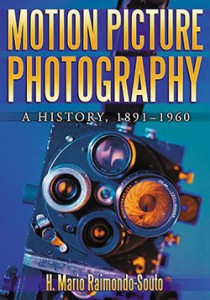Motion Picture Photography
A History, 1891–1960


Average rating: ![]()
| 0 | rating | |
| 0 | rating | |
| 0 | rating | |
| 0 | rating |
Your rating: -
Book Presentation:
In 1891, William Dickson, a researcher at Thomas Edison’s firm, developed the Kinetograph, a motion picture camera that used Eastman Kodak’s new celluloid film. Almost immediately, an industry was born. The new artistic and technical discipline of motion picture photography matured as the film industry grew. From the beginnings of the movie camera, developments in film production and exhibition have been inextricably linked to the evolution of motion picture photography.
This work traces the history of motion picture photography from the late 19th century through the year 1960, when color photography became the accepted standard. Generously illustrated, it covers each decade’s cameras, lenses, cameramen, film processing methods, formats, studios, lighting techniques and major cinematographic developments. Each chapter concludes with examples of the decade’s outstanding cinematography.
Instructors considering this book for use in a course may request an examination copy here.
About the Author:
H. Mario Raimondo-Souto is an Uruguayan filmmaker.
See the publisher website: McFarland & Co
> On a related topic:
Global Film Color (2024)
The Monopack Revolution at Midcentury
Dir. Sarah Street and Joshua Yumibe
Subject: Countries > Great Britain
Technology and the Making of Experimental Film Culture (2023)
by John Powers
Subject: Technique > Cinematography
The Cinematographer's Voice (2022)
Insights into the World of Visual Storytelling
Dir. Lindsay Coleman and Roberto Schaefer
Subject: Technique > Cinematography
The Filmmaker's Eye (2022)
Learning (and Breaking) the Rules of Cinematic Composition
Subject: Technique > Cinematography
Cinematography (2021)
Theory and Practice: For Cinematographers and Directors
by Blain Brown
Subject: Technique > Cinematography